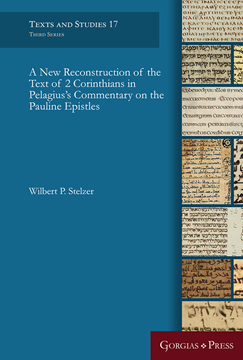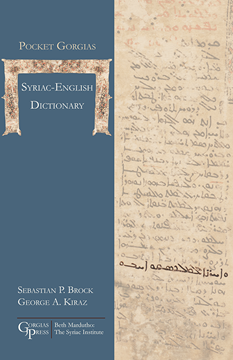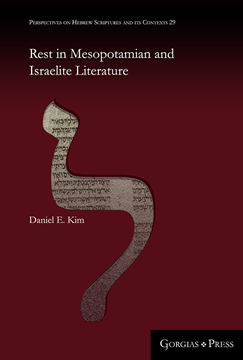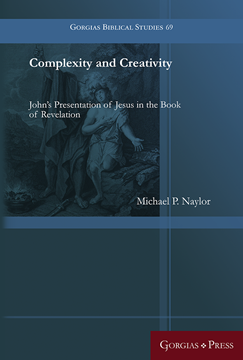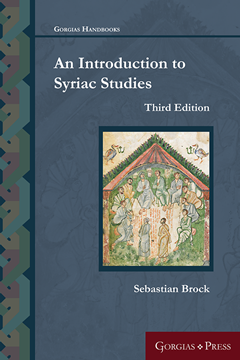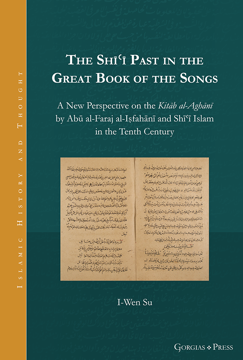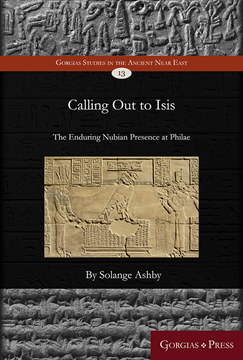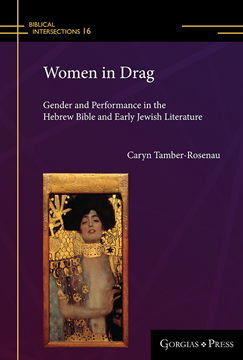A New Reconstruction of the Text of 2 Corinthians in Pelagius' Commentary on the Pauline Epistles
Series: Texts and Studies (Third Series) 17
ISBN: 978-1-4632-0706-9
A new reconstruction of Pelagius's biblical text of 2 Corinthians. It shows how Pelagius's commentary assists us in choosing between variant readings and assessing manuscript reliability. From this new reconstruction, it is now apparent that Pelagius had access to the Vulgate already in the early 5th century.
$133.00 (USD) $79.80 (USD)
Pocket Gorgias Syriac-English Dictionary
Series: Gorgias Handbooks 38
ISBN: 978-1-4632-0707-6
The Pocket Dictionary is both a convenient academic resource and a door into the world of Modern Literary Syriac. With 13,000 entries drawn from the major existing works, it is a practical tool for all but the most specialized Classical Syriac texts.
$45.00 (USD)
The Julian Romance (revised)
A New English Translation
Edited and Translated by Michael Sokoloff
Series: Texts from Christian Late Antiquity 49
ISBN: 978-1-4632-0708-3
The so-called "Julian Romance" was discovered among the Nitrian manuscripts in the 1830s. This revised edition, with facing Syriac text and English translation, provides a new, more accurate translation of this important Syriac text.
$107.00 (USD) $64.20 (USD)
Rest in Mesopotamian and Israelite Literature
ISBN: 978-1-4632-0709-0
Rest in Mesopotamian and Israelite Literature studies the concept of rest in the Hebrew Bible and ancient Near Eastern literature. Through close examination of Mesopotamian texts and selections from the Deuteronomistic History and Chronicles, Kim delineates a concept of rest for each body of literature, and employs a comparative approach to illuminate the rest motif in the Hebrew Bible in light of Mesopotamian literature.
$114.95 (USD) $68.97 (USD)
Complexity and Creativity
John's Presentation of Jesus in the Book of Revelation
Series: Gorgias Biblical Studies 69
ISBN: 978-1-4632-0711-3
This monograph assesses John’s creative interaction with imagery from his cultural context (Roman emperor worship), from the key writings of his apparent religious heritage (the Old Testament), and from convictions shared within the wider early Christian community in his depiction of Jesus in Revelation.
$172.00 (USD) $103.20 (USD)
Journal of Language Relationship 15/1-2
Volume 15/1-2
Series: Journal of Language Relationship 15/1-2
ISBN: 978-1-4632-0712-0
The Journal of Language Relationship is an international periodical publication devoted to the issues of comparative linguistics and the history of the human language. The Journal contains articles written in English and Russian, as well as scientific reviews, discussions and reports from international linguistic conferences and seminars.
$67.00 (USD) $40.20 (USD)
An Introduction to Syriac Studies (Third Edition)
Series: Gorgias Handbooks
ISBN: 978-1-4632-0713-7
This Introduction aims to provide basic guidance to important areas of Syriac studies. The relevance of Syriac studies to a variety of other fields is explored. A brief orientation to the history of Syriac literature is offered, and Syriac is set within the context of the other Aramaic dialects. A thorough discussion on important tools (Instrumenta Studiorum) is presented; topics include grammars, dictionaries, the Bible in Syriac, histories of Syriac literature, bibliographical aids and relevant series, periodicals, and encyclopedias. This Introduction should prove useful both for the student beginning Syriac studies and for scholars working in adjacent fields.
$39.00 (USD)
The Shi'i Past in the Great Book of the Songs
A New Perspective on the Kitāb al-Aghānī by Abū al-Faraj al-Iṣfahānī and Shīʿī Islam in the Tenth Century
By I-Wen Su
Series: Islamic History and Thought 24
ISBN: 978-1-4632-0714-4
The Kitāb al-Aghānī (the Book of the Songs) stands as one of the most important extant sources for Arabic literature and Islamic history. Compiled during the first half of the tenth century, the Kitāb al-Aghānī emerges from a pivotal period in the formation of Islamic sectarian identities, a subject of keen and ongoing scholarly debate that is fundamental to our understanding of the later development of Shīʿī Islam. The present study addresses the question of whether or not its compiler, Abū al-Faraj al-Iṣfahānī’s, sectarian leanings can be discerned from the Kitāb al-Aghānī through an analysis based primarily on redaction criticism. By examining the compiler’s editorial interventions, this book argues that al-Iṣfahānī, to some extent at least, presents past people and events central to the Shīʿī worldview in accordance with his sectarian affiliation.
$156.00 (USD) $93.60 (USD)
Calling Out to Isis
The Enduring Nubian Presence at Philae
Series: Gorgias Studies in the Ancient Near East 13
ISBN: 978-1-4632-0715-1
The expansion of the cult of the goddess Isis throughout the Mediterranean world demonstrates the widespread appeal of Egyptian religion in the Greco-Roman period. In this monograph, Ashby focuses on an oft-neglected population in studies of this phenomenon: Nubian worshipers. Through examination of prayer inscriptions and legal agreements engraved on temple walls, as well as Ptolemaic royal decrees and temple imagery, Ashby sheds new light on the involvement of Nubians in the Egyptian temples of Lower Nubia, and further draws comparisons between Nubian cultic practices and the Meroitic royal funerary cult.
$95.00 (USD) $57.00 (USD)
Women in Drag
Gender and Performance in the Hebrew Bible and Early Jewish Literature
Series: Biblical Intersections 16
ISBN: 978-1-4632-0716-8
From Jael’s tent peg to Judith’s sword, biblical interpreters have long recognized the power of the "lethal women" stories of the Hebrew Bible and related literature. The tales of Jael and Judith, female characters who assassinate enemy commanders, have fascinated artists, writers, and scholars for centuries, no doubt partly because of the gender of the characters doing the killing. Tamber-Rosenau presents the first systematic study, both text-centered and deeply engaged with a variety of queer-theoretical frameworks, of the motif of the woman-turned-warrior in ancient Jewish literature. Through analysis from queer-theoretical perspectives and comparison with Ancient Near Eastern and Greco-Roman literature, Women in Drag shines new light on three strong female characters from the Hebrew Bible and the early days of Jewish literature.
$114.95 (USD) $68.97 (USD)
